Truth matters. Community matters. Your support makes both possible. LAist is one of the few places where news remains independent and free from political and corporate influence. Stand up for truth and for LAist. Make your year-end tax-deductible gift now.
Using old school analog tech to teach kids about the digital world
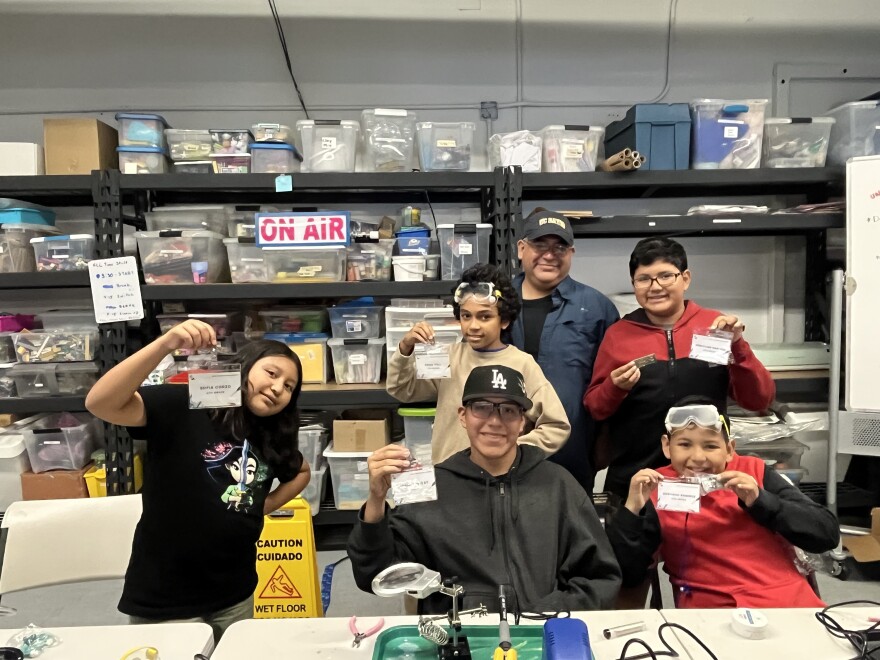
Some 30 years ago, two students from Bell High School fell for each other while bonding over technology and their shared dreams of starting a youth center on the southeast side of Los Angeles County.
At the time, Emma Hernandez and Cesar Zaldivar-Motts were aspiring engineers, but they struggled with the curriculum because they weren’t properly prepared for the in-depth scientific knowledge needed for college-level courses.
Both eventually switched majors — Hernandez studied computer science while Zaldivar-Motts focused on political science — but once they got their degrees, they returned to the community to give back. Zaldivar-Motts is CEO of a regional nonprofit housing organization, and Hernandez leads the Southeast Community Development Corporation.

Now, the couple is finding creative ways to engage kids in STEM at the Bell Technology Center, just two blocks away from where they first met. That includes launching a new six-week academy where students get to build their own ham radio for free and from scratch.
“We're finally pursuing that dream of providing this after school resource,” Zaldivar-Motts said.
Digital divide
The high school sweethearts want to encourage more local teens to become engineers, scientists or even teachers of STEM programs.
Data show the area is among the hardest hit by California’s digital divide, which is the gap between people who have modern digital skills and easy access to technology, and those who do not.
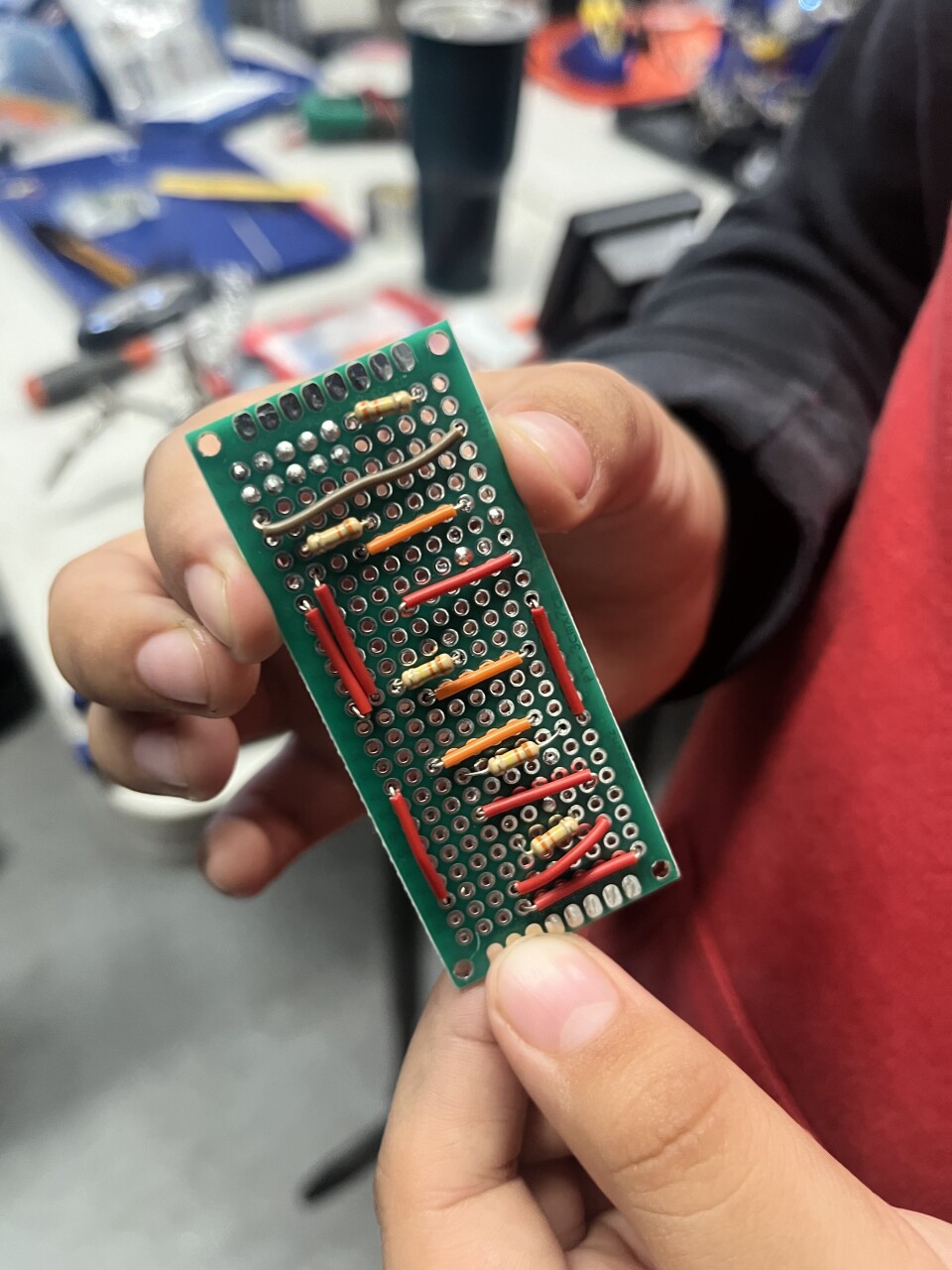
Zaldivar-Motts said the class is a “stepping stone to encourage them to explore robotics, 3D printing, computer coding, and other STEM activities.”
"We've learned you can't just lecture to kids," he explained. "We need to excite them in the beginning so they can stay with us long-term.”
Together, the couple welcomes about a dozen middle school and high school-aged students on Saturday mornings for a crash course on electronics. By the end of the six-week academy, the kids and teens will have the basic skills needed for more advanced courses on robotics and computer programming — an opportunity they might not have otherwise gotten at school or at home on the southeast side.
“Many schools don't have the funding to provide these after school programs, to provide an electronics class or a robotics class,” Zaldivar-Motts said. “So as nonprofits, we come in and fill that gap, and help reduce the digital divide that we face here in the community.”
How the academy works
The academy starts with an introduction to amateur radio, also known as ham radio. It’s a licensed radio service that allows people to communicate with each other over the airwaves without using the internet or cell phones.
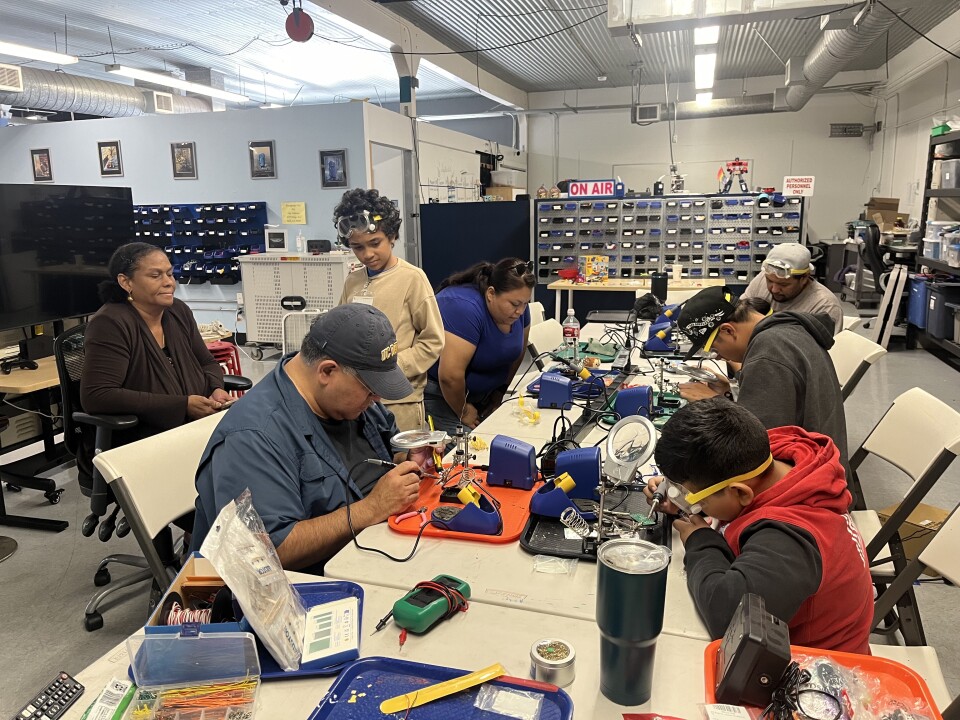
Zaldivar-Motts said while it’s an older technology, the goal is to pique the kids’ interest in electronics. But it does have its uses today — like if the internet goes down in an emergency. In an earthquake-prone L.A., it feels especially relevant.
Once they’re hooked, students learn the basics of how electricity and circuits work. They get hands-on training with soldering machines. It can be dangerous work, according to 10-year-old Santiago Ramirez, who recently burned his finger while soldering a wire to a circuit board.
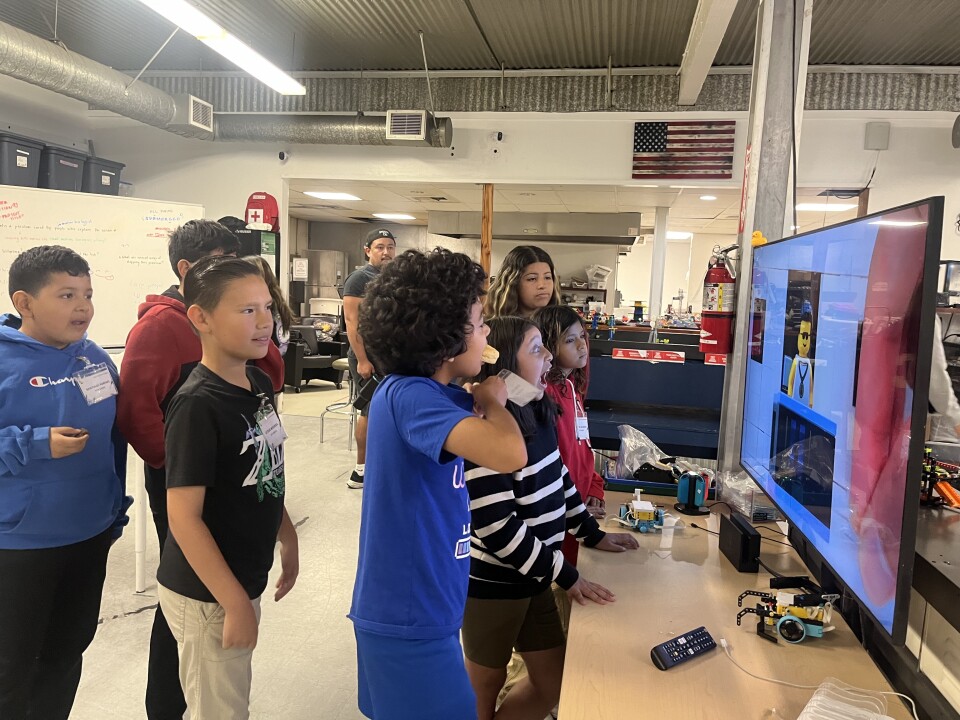
“I thought that part wasn’t hot so I touched it,” he said pointing to the soldering iron. “And when you get burned, trust me, you’re going to get white on your finger.”
Santiago and his 11-year-old brother, Sebastian, have been attending classes at the Bell Tech Center for years. Most of the participants are from around the southeast, including 10-year-old Koda Hall. He said he plans to “show off” his radio at school and hopes to become an engineer one day.
Parent Hector Corzo sat with his daughter, Sofia, while she practiced soldering for the first time. He said he wants her to continue to learn new skills, even if she doesn’t plan on becoming an engineer in the future.
“I've always told her to be open minded,” Corzo said. “Because you never know. It’s better to have it and not need it, than need it and not have it.”
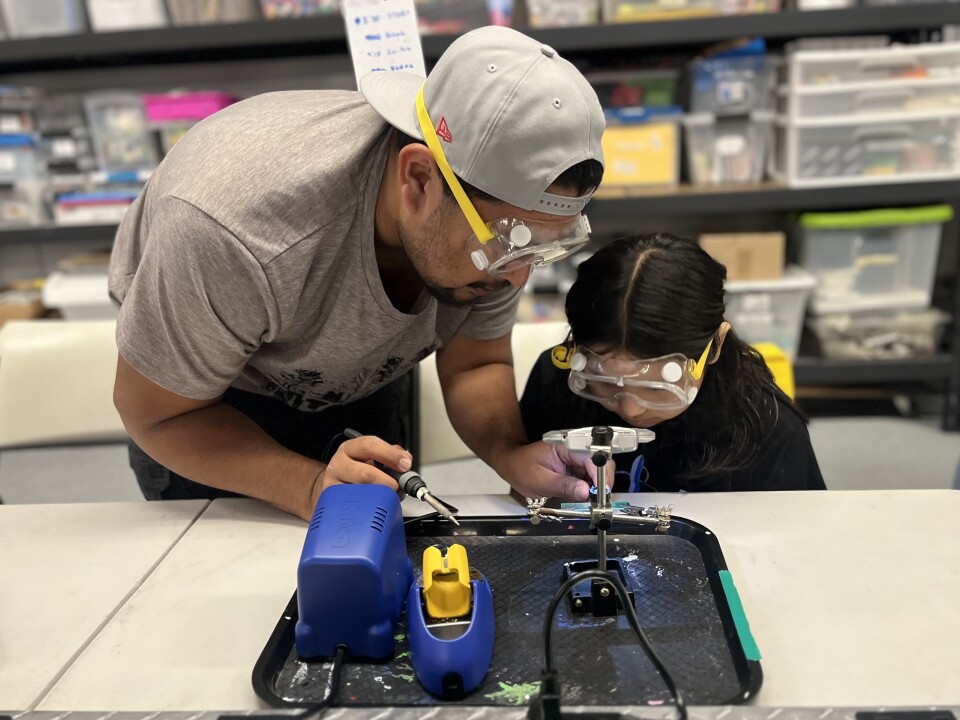
The students managed to assemble a majority of their mini radios by week four of the academy. Zaldivar-Motts said he will start to introduce more advanced concepts and techniques in the Saturdays to come.
“Next week we're going to wrap up the radio building project and then work on Arduino [software] which can control sensors, motors, lights, and measure temperature and distance,” he said.
When asked what the kids might use their new radios for, many said they would show off the project to their classmates.
"Last time I built [one] I showed it to my fourth grade class," Santiago said. "And I talked about it so I was basically my teacher but... about the radio."











